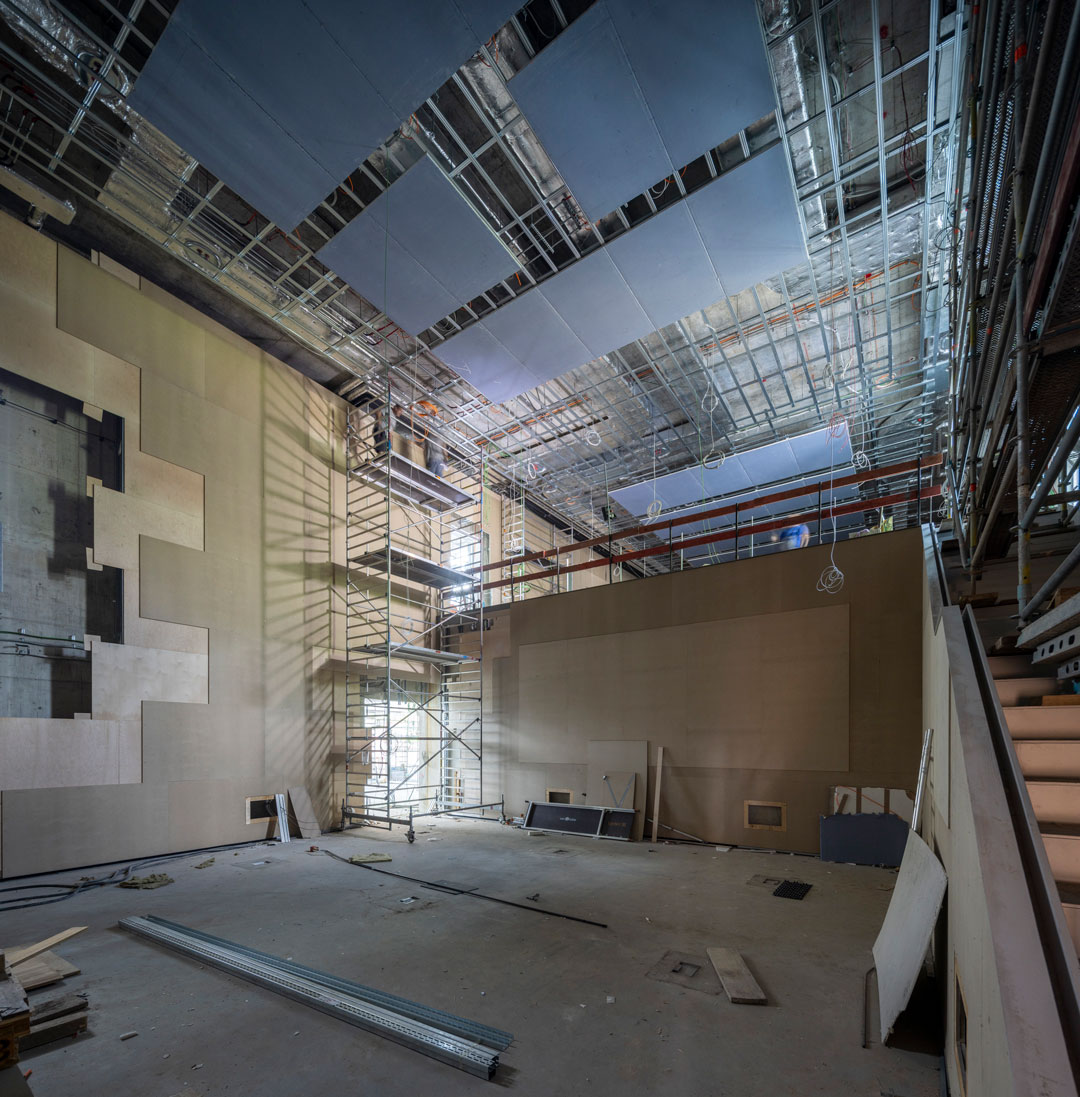2022-06-27
Construction site report, June 2022
After the construction work was carried out especially inside the museum building in the last few weeks – more on that below – the outside area now looks very busy again. The construction container city, which had formed around the museum, is currently being moved. The individual office, lounge and storage areas are moving to the opposite side of the street in articulated lorries. This creates the space needed to start on the outdoor facilities soon. Driveways, walkways, ramps and even the terrace of the catering facilities, stairways and bicycle stands will be created and will blend into the cityscape of Wilhelmstrasse.
In our last construction status report, we provided some information about the different floor coverings and their installation. The tradesmen are currently busy with wall and ceiling cladding. For this purpose, more than 2,000 square metres of wooden panels are installed, screwed and glued. Mr Gündogdu, the site manager at Lindner, is in charge of this dry construction work for us and ensures that the right wooden panels are also used in the right places. Up to three layers of different thicknesses and sizes are needed so that the works of art can be securely attached to the wall in future. According to Mr Gündogdu, additional Dekozell flexo-panels will be attached around the picture hanging areas in the exhibition areas specifically; these are panels made of melamine resin foam. In order for the wall to appear as an even surface at the end, acoustic spray filler is applied to the three wooden layers. The fine fabric is required to prevent visible cracks from forming. However, a particular challenge is the filler technique. In order to ensure high quality, an extremely fine surface and a perfect result here, the plaster has to be applied under lighting and sanded down in an intricate operation.
Work is currently being done on the ceilings in a different way but no less demanding. Plasterboard is being used for this in the exhibition spaces. In some places, heating and cooling elements or technical installations such as loudspeakers are integrated in the panels. However, the acoustic spray filler makes the installations invisible to visitors.
We can also report on another building speciality here. In a museum it is absolutely mandatory that there is consistent humidity and temperature. This can be guaranteed inter alia by ventilation slots in the spaces above the floor. For the MRE building, this means the walls above the ventilation slots are floating and cantilevered and the load has to be transferred over the raw concrete. For this purpose, the panels (as you recall, three layers) are screwed into the wall substructure in a certain grid. Stresses and movements can be absorbed in such a way that the structures or surfaces are not damaged.

